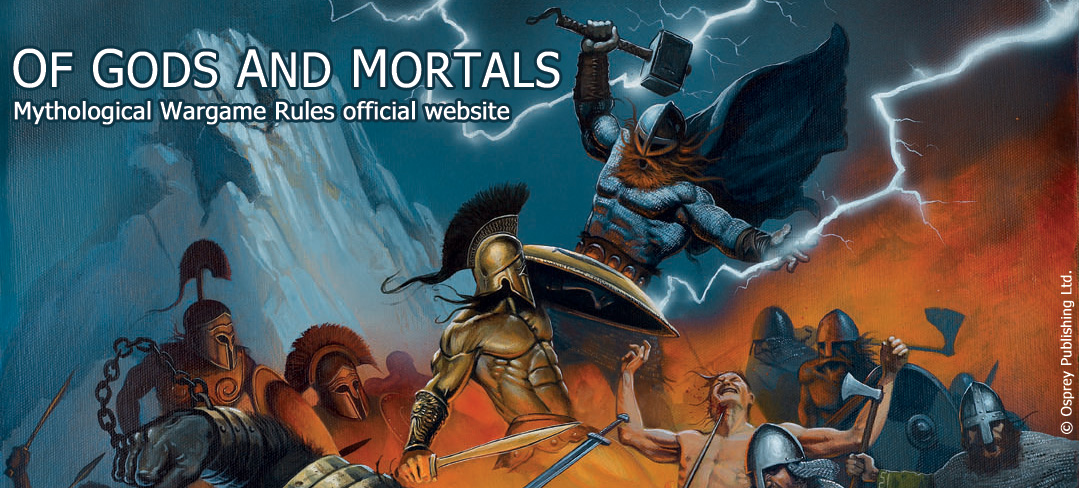Errata (book)
Theseus is 60 pts, not 30.
Hyppolite is 70 pts, not 80.
Undead berseker is 22 pts, not 25.
The Minotaur is not Big. The profile is correct, the example is not. You may, however, add the Big rule depending on the size of the model used.
The Greek generic mounted hero should be 90 points, not 86.
Clarifications
Tremble Before My Might works against any kind of troops, including other gods. There are examples in the myths of gods intimidating or striking terror in the hearts of their peers, e.g. Athena. It does NOT work against Undead.
Lightning
Lightning MAY be used even by a God in a fray or involved in a melee.
Divine powers assigned to Legends
Certain divine powers, in certain armies, are assigned to Legends. Examples: Illusions, Confound. This is done deliberately for the sake of variety and game balance. This does not mean that you may assign these powers to Legends of your own creation. We have given them only to Pantheons that need them because they are perceived as weak by the players.
Mounted
The melee bomus from Mounted applies against foot models of the same tier or lower, no matter what their size. A Mounted Theseus has no bonus against a god, but he enjoys the bonus against a Giant.
Question: How do CO Units move? Straight ahead and then they can turn at the end of the move, or can they wheel as they advance?
CO units may wheel during the movement. Just place the stick so one end is on the central figure in the unit, angle it as you want, then place a finger where along the stick you want the unit to go and slide the unit until it meets your finger.
OO units must Always recoil at the end of a melee.
At the end of a clash (that is, after a combat die roll exchange, or multiple die rolls if the first one was a tie and the melee had to go on) between a CO and an OO unit, the OO unit must recoil 1 x Short EVEN IF they won. Exception: they do not recoil if they completely destroy their enemy unit. See p.18.
The CO unit, if they can, may choose to follow up the OO unit but the follow up does not cause any other recoil this turn.
In a clash between a CO and an OO unit in which no on is destroyed, at the end of the clash both units recoil 1 x Short. The OO one recoils becuse it clashed with a CO unit, and the CO unit recoils because it lost a melee. This happens rarely.
Dashing
If a Dashing unit wins a melee and follows up, the second impact does not generate an additional attack action.
Tied Combat Question: A god is in melee with a unit of mortals. The mortals have been reduced to a single figure. They tie a combat. What happens?
The units take a wound each, so the god must make a Q roll to turn the wound into a recoil effect, and the mortal unit is destroyed.
Shapeshift and Disengage
If a god is in melee and shapeshift into a form which has Free Disengage, the god may use the trait to evade the melee. An example would be Athena turning into an owl and flying away.
Tied Free Hacks
A tied free hack, including one between gods, means that nothing happened and no effect applies, not even the clash of the titans rule. It just means that the god that suffered a free hack was not hit. In other words, a free hack has game effects only IF the unit performing the free hack wins the free hack roll. Any other result is a no effect.
Hammering Blow
A free hack triggered by rolling a 1 when using the Hammering blow trait is performed BEFORE applying the result from the combat that triggered the free hack. The Hammering Blow rule does not apply again during the free hack, e.g., if the model who rolled a 1 rolls another 1 during the free hack, this does not trigger another free hack, and if he rolls a 6, he does not get a +2 to his total.
Frays and Invocation
Mortals units involved in a Fray may not take part in an invocation even if they are not in direct contact with an enemy.
